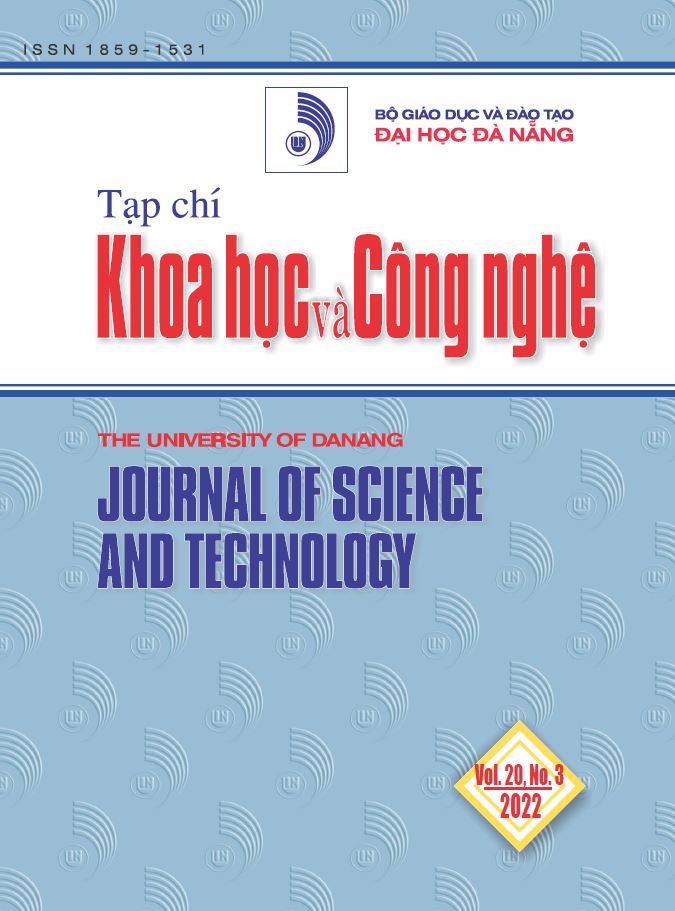Điều chỉnh góc đánh lửa sớm động cơ chạy bằng hỗn hợp biogas-syngas-hydrogen trong hệ thống năng lượng tái tạo hybrid
 Tóm tắt: 441
Tóm tắt: 441
 |
|  PDF: 165
PDF: 165 
##plugins.themes.academic_pro.article.main##
Author
-
Bùi Văn GaTrường Đại học Bách khoa - Đại học Đà NẵngBùi Thị Minh TúTrường Đại học Bách khoa - Đại học Đà NẵngLê Minh TiếnTrường Đại học Bách khoa - Đại học Đà NẵngBùi Văn HùngTrường Đại học Sư phạm Kỹ thuật - Đại học Đà NẵngNguyễn Lê Châu ThànhTrường Đại học Sư phạm Kỹ thuật - Đại học Đà Nẵng
Từ khóa:
Tóm tắt
Áp suất, nhiệt độ cháy và phát thải NOx tăng khi tăng góc đánh lửa sớm. Công chỉ thị chu trình đạt giá trị cực đại ứng với góc đánh lửa sớm tối ưu phụ thuộc vào thành phần nhiên liệu. Với hỗn hợp nhiên liệu biogas-hydrogen cho trước, góc đánh lửa sớm tối ưu trung bình tăng 2°TK khi hàm lượng syngas trong hỗn hợp tăng 20%. Đối với hỗn hợp biogas-syngas cho trước, góc đánh lửa sớm tối ưu giảm tuyến tính theo mức tăng hàm lượng hydrogen với tốc độ giảm khoảng 0,43 (°TK /% H2). Với góc đánh lửa sớm cho trước, NOx giảm khi tăng hàm lượng syngas. Có thể cải tạo hệ thống đánh lửa của động cơ tĩnh tại truyền thống thành hệ thống đánh lửa điều khiển điện tử để tự động điều chỉnh góc đánh lửa sớm phù hợp với điều kiện làm việc của động cơ trong hệ thống năng lượng tái tạo hybrid. Hệ thống đơn giản gồm cảm biến từ Hall, cụm đánh lửa tổ hợp và vi điều khiển được cài đặt chương trình điều chỉnh góc đánh lửa sớm theo thành phần nhiên liệu.
Tài liệu tham khảo
-
[1] VNA/VNS, “Việt Nam strives to achieve ‘net zero’ by 2050, with international support: PM”, Việt Nam News, November, 02/2021
[2] https://vietnamnews.vn/environment/1071075/viet-nam-strives-to-achieve-net-zero-by-2050-with-international-support-pm.html
[3] Yousefi H, Ghodusinejad MH, Kasaeian A., “Multi-objective optimal component sizing of a hybrid ICE + PV/T driven CCHP microgrid”, Appl Therm Eng, 2017.
[4] Shaopeng Guo, Qibin Liu, Jie Sun, Hongguang Jin., “A review on the utilization of hybrid renewable energy”, Renewable and Sustainable Energy Reviews, vol 91, 2018, 1121–1147.
[5] Chouaib Ammari, Djamel Belatrache, Batoul Touhami, Salim Makhlouf, “Sizing, optimization, control and energy management of hybrid renewable energy system- a review”, Energy and Built Environment, 2021.
[6] I. Come Zebra, Henny J. van der Windt, Geraldo Nhumaio et al., “A review of hybrid renewable energy systems in mini-grids for off-grid electrification in developing countries”, Renewable and Sustainable Energy Reviews, vol 144, 2021, 111036.
[7] Marek Jaszczur, Qusay Hassan, Patryk Palej, Jasim Abdulateef, “Multi-Objective optimisation of a micro-grid hybrid power system for household application”, Energy, 202, 2020, 117738.
[8] Ifegwu Eziyi, Anjaneyulu Krothapalli, “Sustainable Rural Development: Solar/Biomass Hybrid Renewable Energy System”. Energy Procedia, 57, 2014, 1492-1501.
[9] Ismail MS, Moghavvemi M, Mahlia TMI, Muttaqi KM, Moghavvemi S., 2015. “Effective utilization of excess energy in standalone hybrid renewable energy systems for improving comfort ability and reducing cost of energy: a review and analysis”, Renewable and Sustainable Energy Reviews, 42, 726–734.
[10] Williams NJ, Jaramillo P, Taneja J, Ustun TS., “Enabling private sector investment in microgrid-based rural electrification in developing countries: A review”, Renewable and Sustainable Energy Reviews, 52, 2015. 1268-1281.
[11] Soumya Mandal, Hosna Yasmin, M. R. I. Sarker, and M. R. A. Beg., “Prospect of solar-PV/biogas/diesel generator hybrid energy system of an off-grid area in Bangladesh”. AIP Conference Proceedings 1919, 2017, 020020.
[12] R. Borges Neto, P.C.M. Carvalho, J.O.B. Carioca, F.J.F. Canafistula, 2010, “Biogas/photovoltaic hybrid power system for decentralized energy supply of rural areas”, Energy Policy, 38, 2010, 4497-4450.
[13] Katharina Bär, Stefanie Wagender, Felix Solka, Abdessamad Saidi, Prof Wilfried Zörner, “Flexibility Potential of Photovoltaic Power Plant and Biogas Plant Hybrid Systems in the Distribution Grid”, Chemical Engineering & Technology, 2020, pp. 1-12.
[14] Tamoor M, M. Suleman Tahir, Muhammad Sagir et al., “Design of 3 kW integrated power generation system from solar and biogas”, International Journal of Hydrogen Energy, vol 45, 2020, 12711-12720.
[15] S. Mohammed, M.W. Mustafa, N. Bashir, “Hybrid renewable energy systems for off-grid electric power: Review of substantial issues”, Renewable and Sustainable Energy Reviews, 35, 2014, 527–539.
[16] Krishna KS, Kumar KS., “A review on hybrid renewable energy systems”, Renewable and Sustainable Energy Reviews, 52, 2015, 907-916.
[17] Trần Văn Nam, Bùi Văn Ga, Phan Minh Đức, Bùi Thị Minh Tú, “Cung cấp nhiên liệu biogas-hydrogen cho động cơ đánh lửa cưỡng bức kéo máy phát điện trong hệ thống năng lượng tái tạo hybrid”, Tuyển tập Công trình Hội nghị khoa học Cơ học Thủy khí toàn quốc lần thứ 21, Quynhon 19-21/7/2018, pp. 448-458
[18] Bui Van Ga, Bui Thi Minh Tu, Nguyen Van Dong, Bui Van Hung, “Analysis of combustion and NOx formation in a SI engine fueled with HHO enriched biogas”, Environmental Engineering and Management Journal, May 2020, Vol. 19, No. 5, 317-327.
[19] Bùi Văn Ga, Trần Thanh Hải Tùng, Lê Minh Tiến, Bùi Thị Minh Tú, Đặng Văn Nghĩa, Tôn Nguyễn Thành Sang, “Tính năng kỹ thuật và phát thải ô nhiễm động cơ phun biogas-HHO trên đường nạp”, Tạp chí Khoa học và Công nghệ-Đại học Đà Nẵng, Vol.18, No1, 2020, pp. 43-48.
[20] Van Ga Bui , Van Nam Tran , Anh Tuan Hoang , Thi Minh Tu Bui & Anh Vu Vo, “A simulation study on a port-injection SI engine fueled with hydroxy-enriched biogas”, Energy Sources, Part A: Recovery, Utilization, and Environmental Effects, 2020, 1-17.
[21] Bùi Văn Ga, Bùi Thị Minh Tú, Trương Lê Bích Trâm, Nguyễn Đức Hoàng, Phạm Văn Quang, “Thiết lập giản đồ cung cấp nhiên liệu cho động cơ biogas-xăng”, Tạp chí Khoa học và Công nghệ- Đại học Đà Nẵng, Vol. 17, No. 9, 2019, pp. 33-39.



